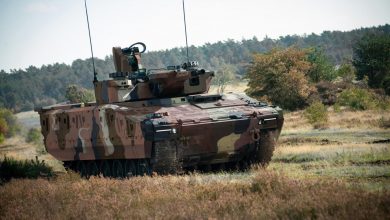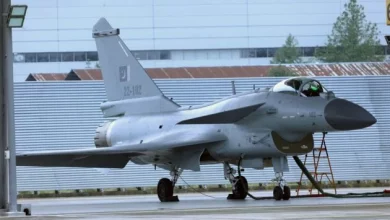UAE astronaut exits ISS for first Arab space walk

Emirati astronaut Sultan Alneyadi stepped out of the International Space Station (ISS) Friday for the first space walk by an Arab astronaut, a moment touted by the UAE as a “milestone”.
Alneyadi, 41, dubbed the “Sultan of Space” by his alma mater, become the first Arab astronaut to embark on a six-month space mission when he blasted off for the ISS in early March aboard a SpaceX Falcon 9 rocket.
On Friday, he undertook “the first Arab spacewalk in history,” wearing a space suit that bears the Emirati flag, said the United Arab Emirates’ Mohammed bin Rashid Space Centre (MBRSC), calling it “a new historic milestone”.
Footage live-streamed by NASA showed the UAE astronaut exiting an ISS hatch.
“Sultan Alneyadi has egressed the hatch, the first ever space walk by an Arab astronaut,” NASA said.
The space walk will last for around six hours and thirty minutes, according to MBRSC and NASA.
Alongside NASA’s Stephen Bowen, Alneyadi will “change the Radio Frequency Group unit and prepare for the installation of solar panels,” the Emirati astronaut said in a Twitter post carried by the official WAM news agency.
NASA said the two astronauts will “route power cables to prepare for future power system upgrades outside the” ISS.
Alneyadi is the second man from the wealthy UAE to go to space, after Hazzaa al-Mansoori’s eight-day mission in 2019. He is the first Arab to embark on a long-duration space mission.
The UAE is a newcomer to the world of space exploration but quickly making its mark.
It sent an unmanned spacecraft to Mars in 2021, in the Arab world’s first interplanetary mission, and last year a rover to the Moon.
Earlier this week, the UAE-developed Rashid Moon rover was lost when Japanese start-up ispace’s Hakuto-R lunar lander apparently crashed on the Moon’s surface, ispace said on Wednesday.
Dubai’s ruler, Sheikh Mohammed bin Rashid al-Maktoum quickly directed the MBRSC to begin work on a second rover dubbed Rashid 2.





